Last October, I was able to take a nice overnight excursion to a small resort on Mulshi Lake, near Pune, about a 100-mile (165 km) drive from the Grand Hyatt in Mumbai. We departed from the hotel just before lunch, having just arrived from Ahmedabad that morning. Our route took us on the Mumbai-Pune Expressway and we left early enough that the traffic was not bad.
Our travelling group took several cars, each leaving from different locations. Our past trips of using a bus taught us that the logistics of getting everyone to one location to start, along with the slow pace of the buses themselves, make a car trip more practical. India has a relatively new policy that requires for-hire cars to have a speed governor that limits the maximum speed to 80 KPH (50 MPH). Our driver’s car did not have a governor. There were several times we wished it did, as he drove very fast and aggressively. It kept us alert.
Upon reaching the outskirts of Pune, we turned off the highway and headed southwest, navigating the difficult Pune traffic. Once out of the city area and into the country, the traffic lightened up, but the road significantly worsened. It was a bumpy ride but quite scenic. After a couple of hours of driving, we arrived at the Residency Lake Resort & Spa, our accommodations for that evening. The resort is about 2 miles (3 km) past the Mulshi Dam. The view from the resort is quite pleasant.
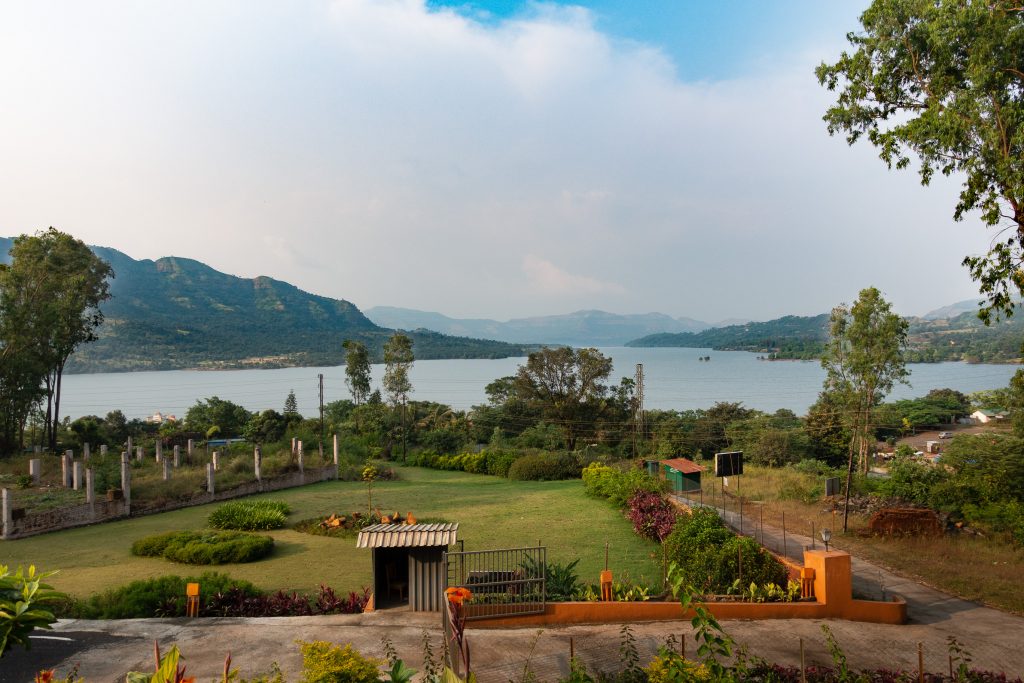
Mulshi Lake holds about 42,420 acre-feet of water (per Wikipedia 0.0523 km3 [0.0125 cu mi]). An acre-foot is the amount of water that would cover an acre (0.405 hectare) to a depth of one foot. It is about 325,853 gallons (1,233,489 liters), the approximate amount of water a US household uses in a year. For comparison, Shasta
Lake, the largest reservoir in the California State Water project, can hold 4,552,000 acre-feet. Mulshi Lake is about the same capacity as the Ice House Reservoir on the American River west of Lake Tahoe. Since the monsoon had just finished when we were there, Mulshi Lake was very full.
Mulshi Dam produces power for Pune with a 300 megawatt power plant run by Tata Power. It was built in the 1920s.
Here is a shot of Mulshi Lke from our hike the next day, and the teaser to get you to keep reading beyond the fold.
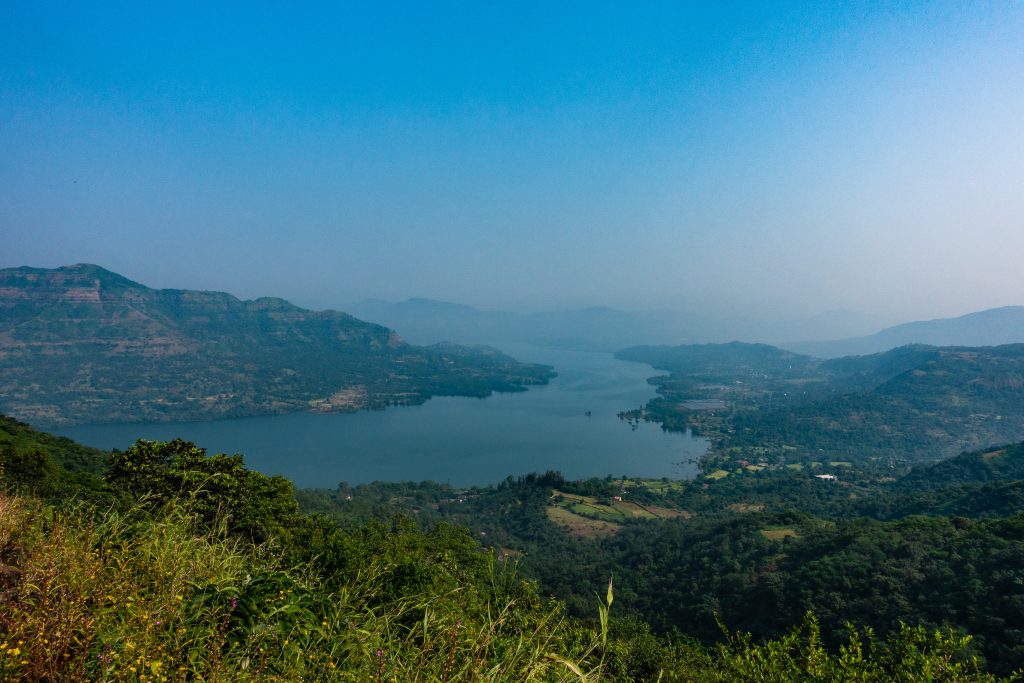
Residency Lake Resort and Spa has very nice accommodations. It is very well kept and clean. The food is excellent and the rooms are quite comfortable. We had a nice view of the lake out the front window.
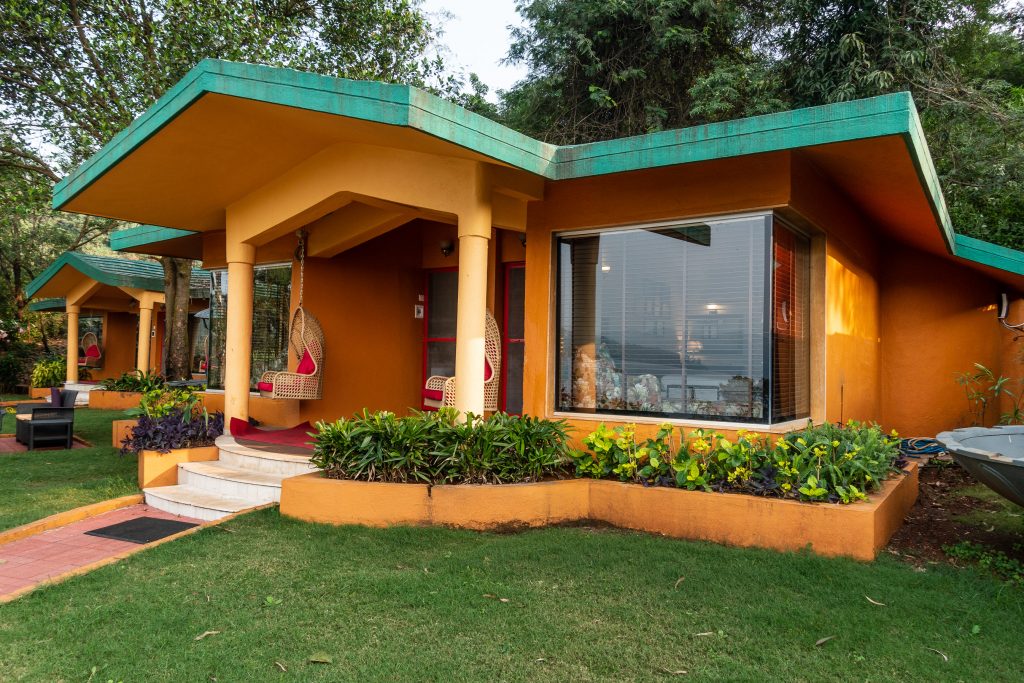
During our pleasant dinner, we were greeted with a major downpour that lasted a good 20 minutes. The weather had the characteristics of the southwest US monsoon. It was humid and hot during the day. While the day started clear, clouds built up as the atmosphere warmed up at the ground level and raised up warm, moist air. This was then released in a major downpour in the evening. I don’t recall any lightning.
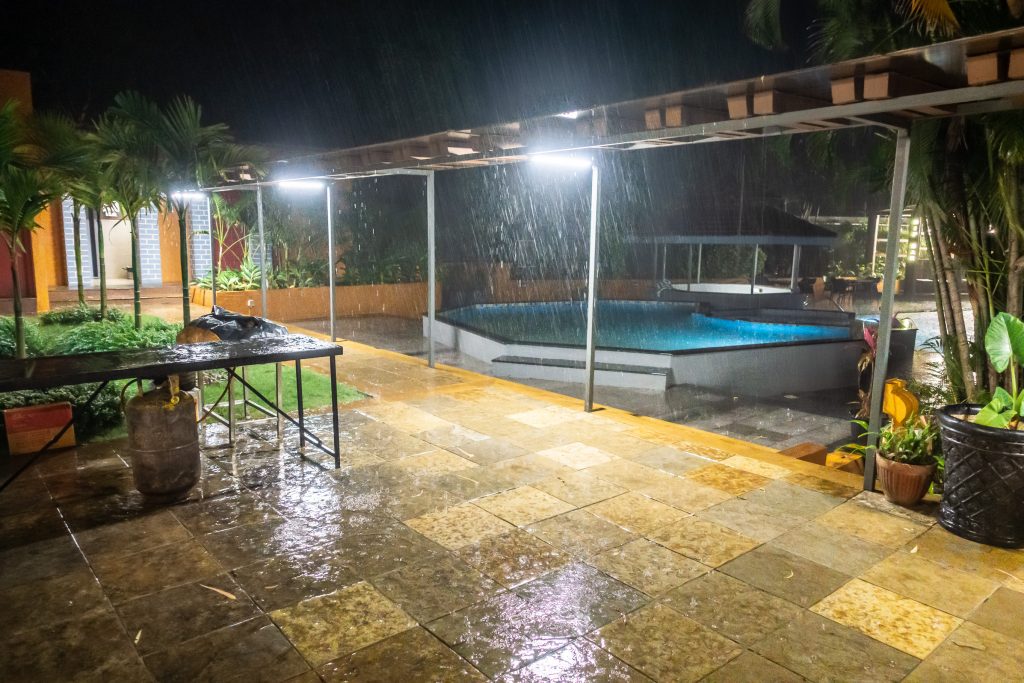
After a pleasant evening of fun and conversation, we got up early and headed up the mountain (hill?) behind the resort, walking up what Google Maps calls the Mulshi-Valasa road.
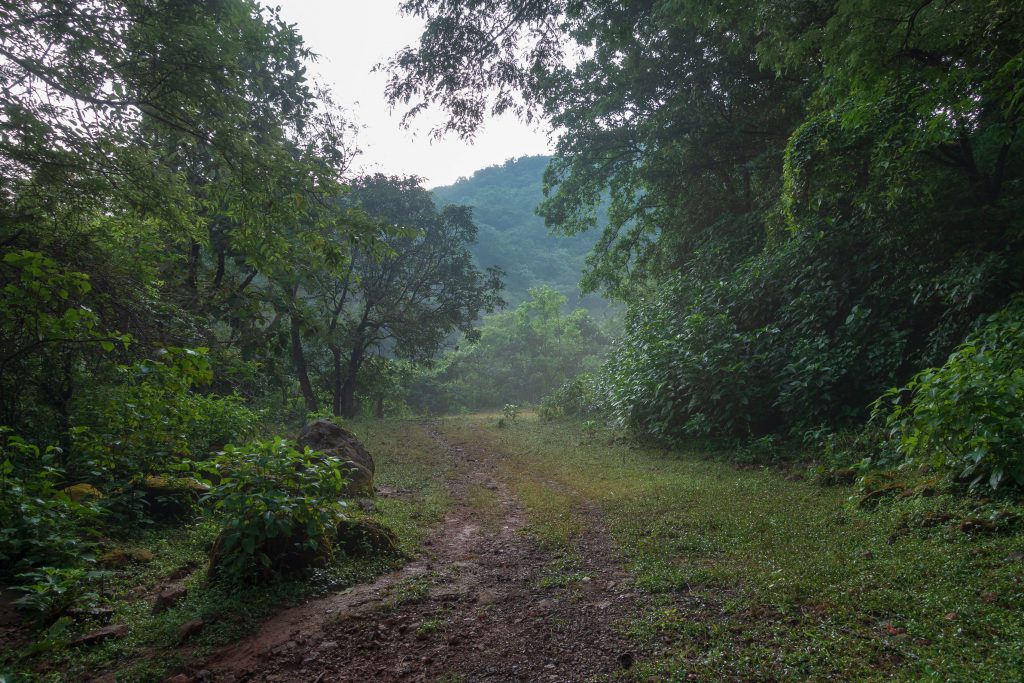
We passed some houses and retreats on the way up. Everything was green and alive from the monsoon and the prior night’s rain.

The Sun was rising up through the mist.
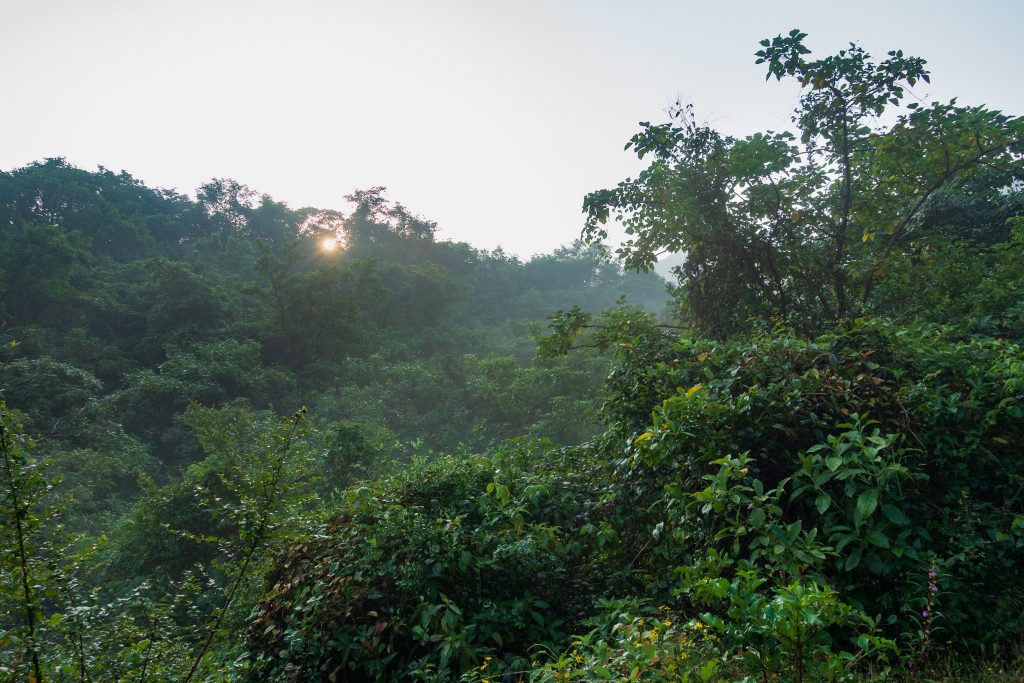
Small crabs were foraging through the dampness on the ground.
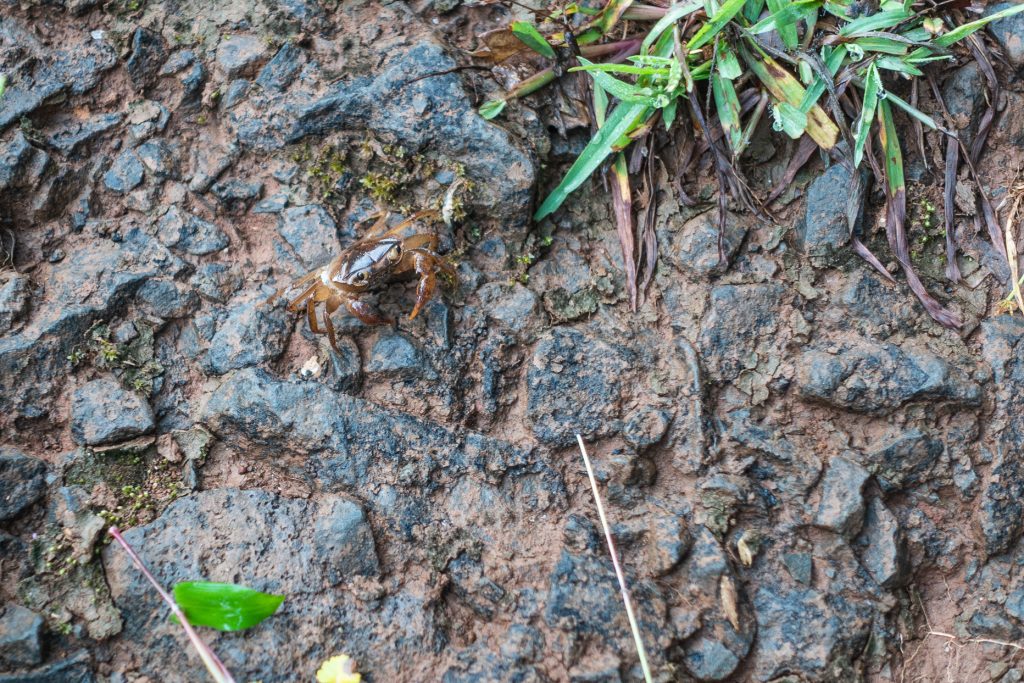
As the Sun rose higher, its golden glow mixed with the green. It is hard to see from these pictures, but this was a fairly strenuous trek. It covered 1.5 miles one-way (2.4 km) with an elevation gain of 1,120 ft (342 meters).
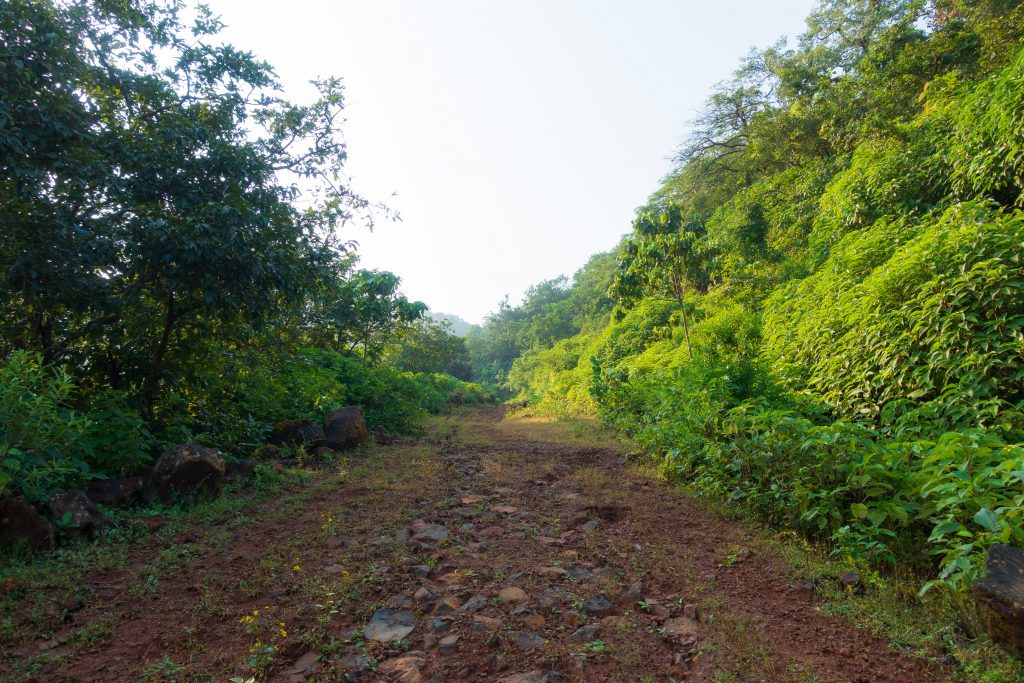
About half way up, we got our first glimpse of the lake.
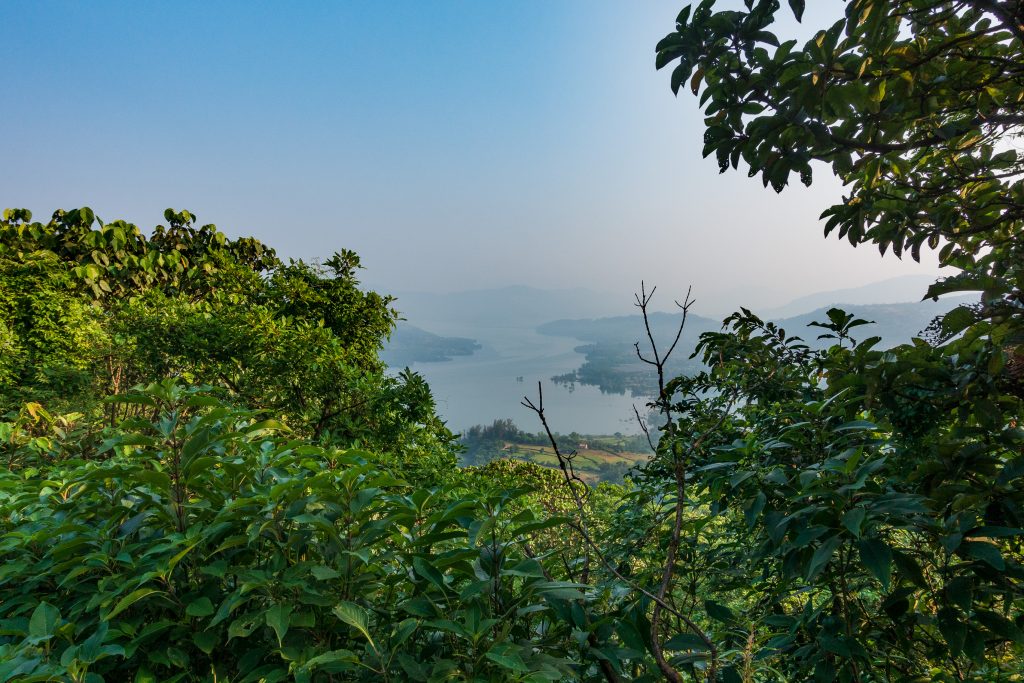
Just before we reached the plateau at the top, we passed a small house. These people tend livestock and live here year-round. They must walk down to the base of the hill for water once the monsoon-driven creeks dry up.
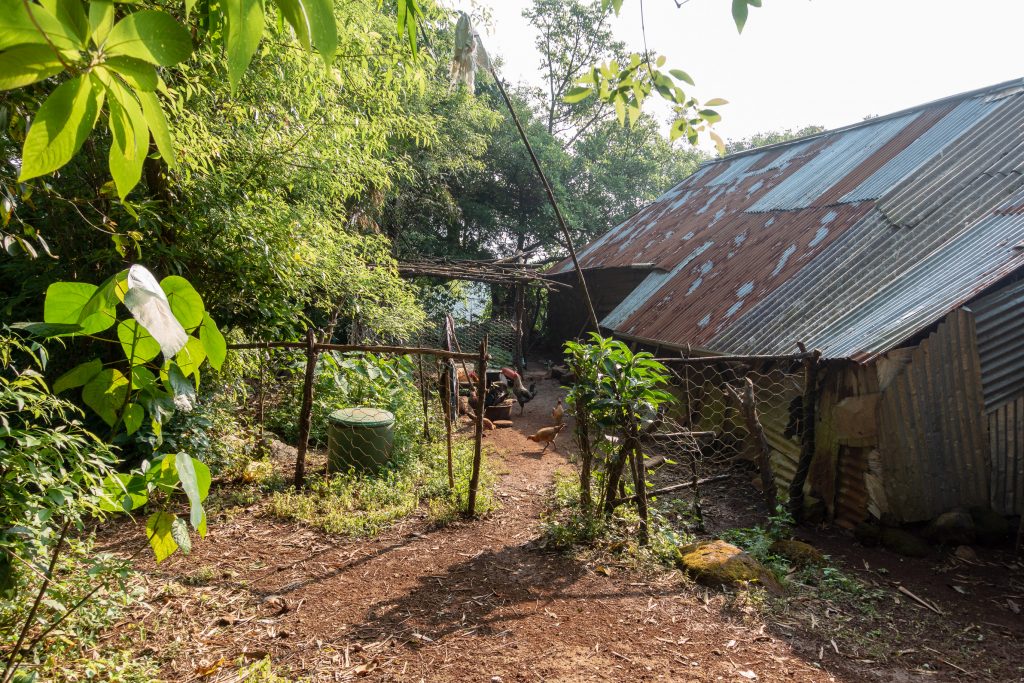
The view from the top was spectacular. This is a two-image mosaic of the view.
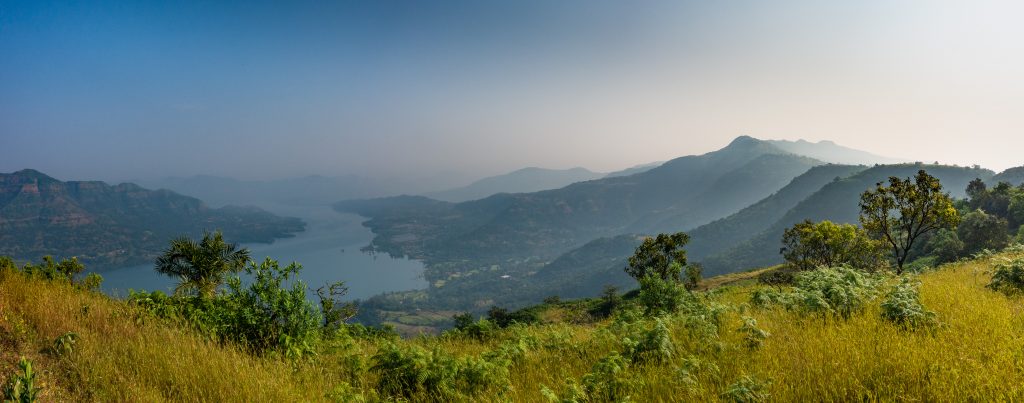
The range of colors was beautiful.
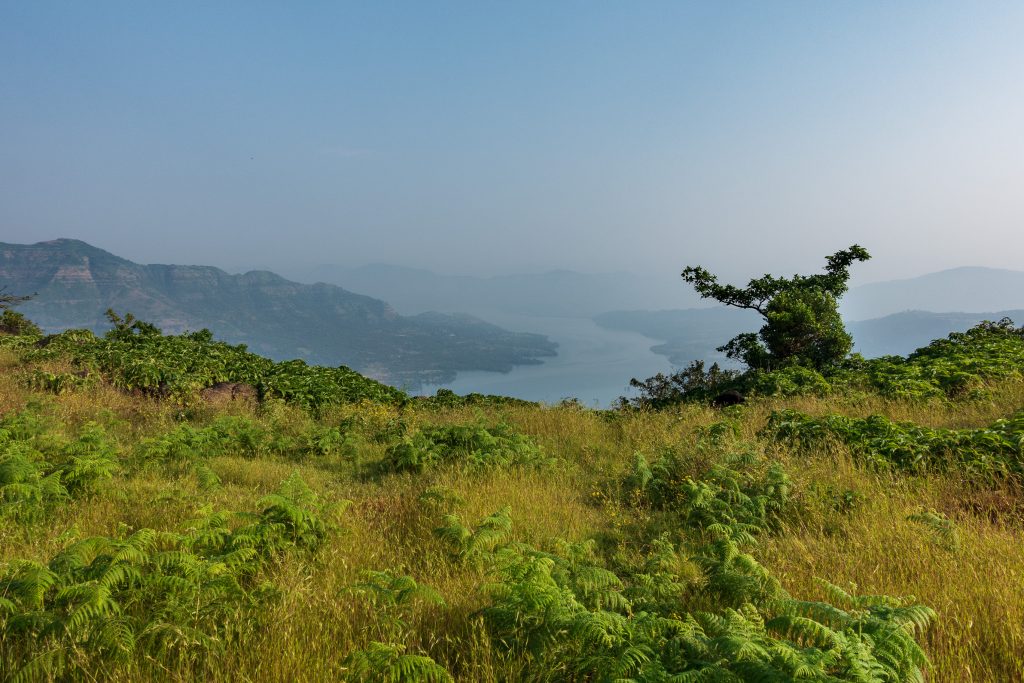
There was a small temple to Ganesha on the side of the plateau.
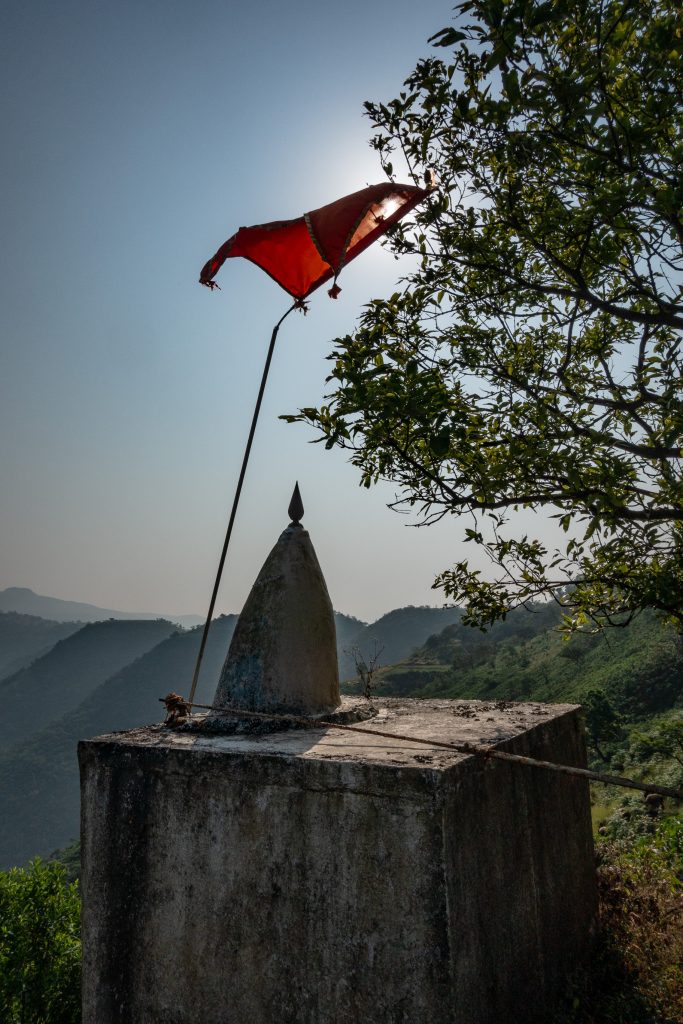
The temple is actively visited. Here is the small statue of Ganesha inside the temple.
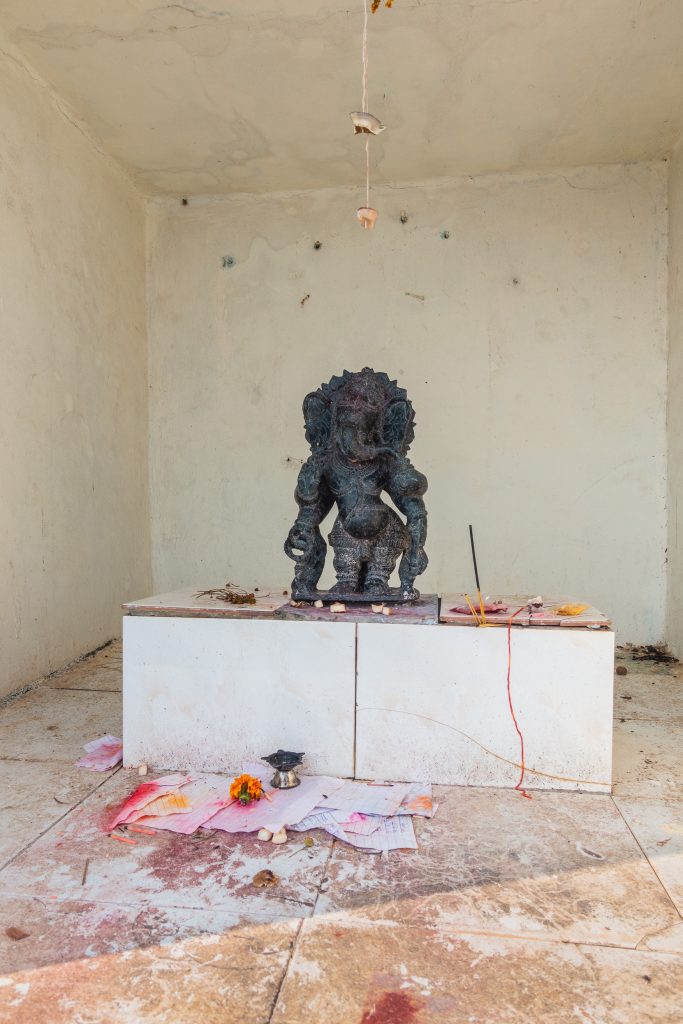
A herdsman was watching over his livestock on the edge of the hill by the temple. He paid little attention to us.
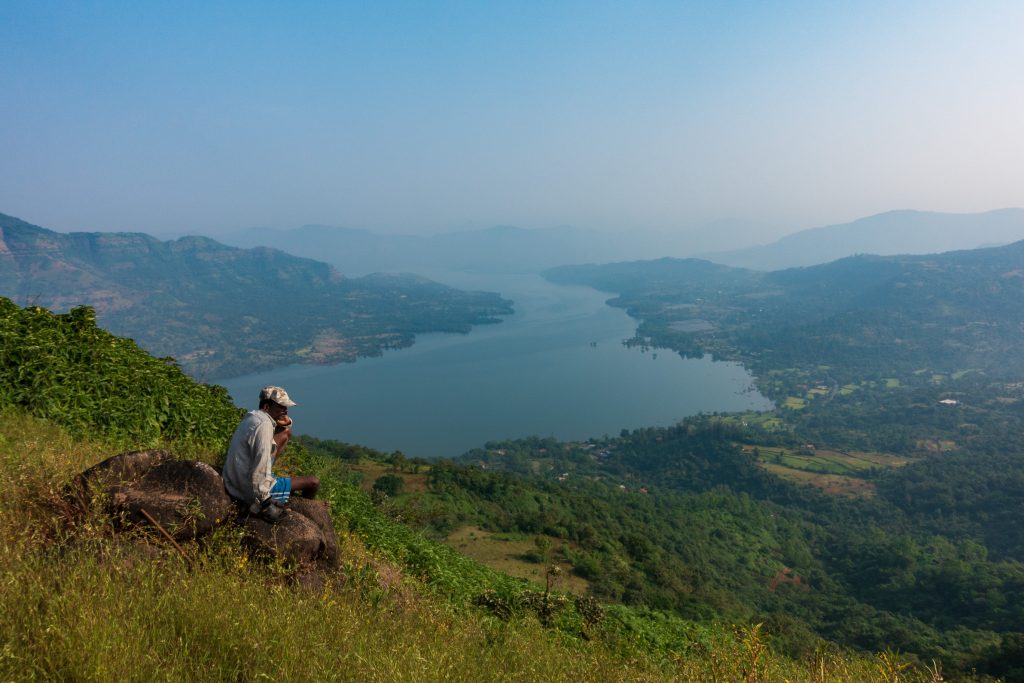
The livestock grazed peacefully on the hillside.
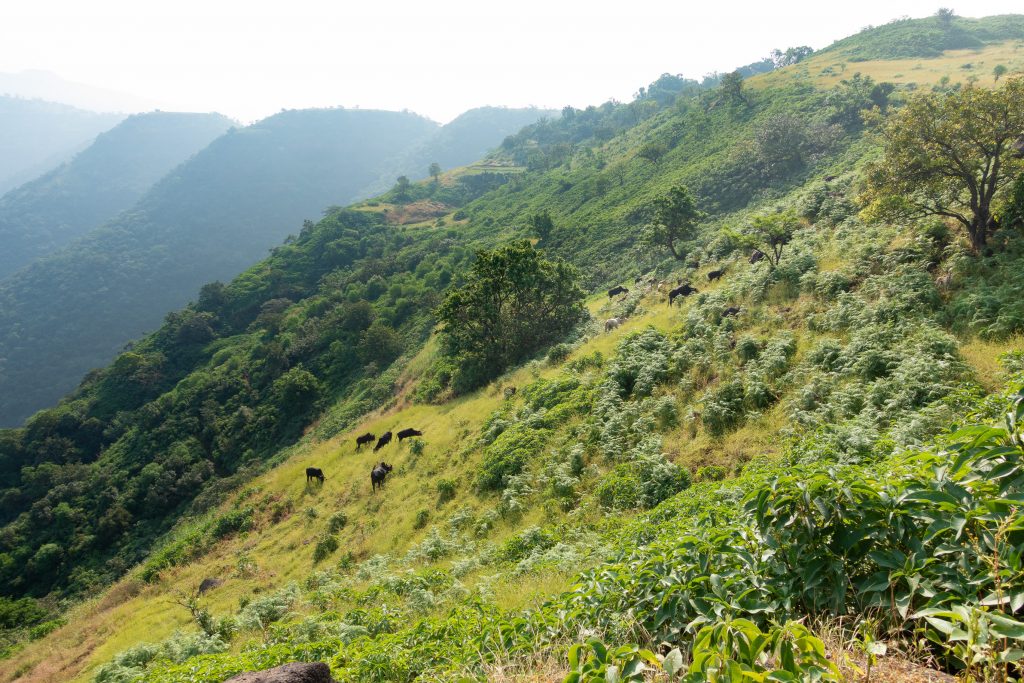
The views were stunning. That’s why I am including so many pictures of them.
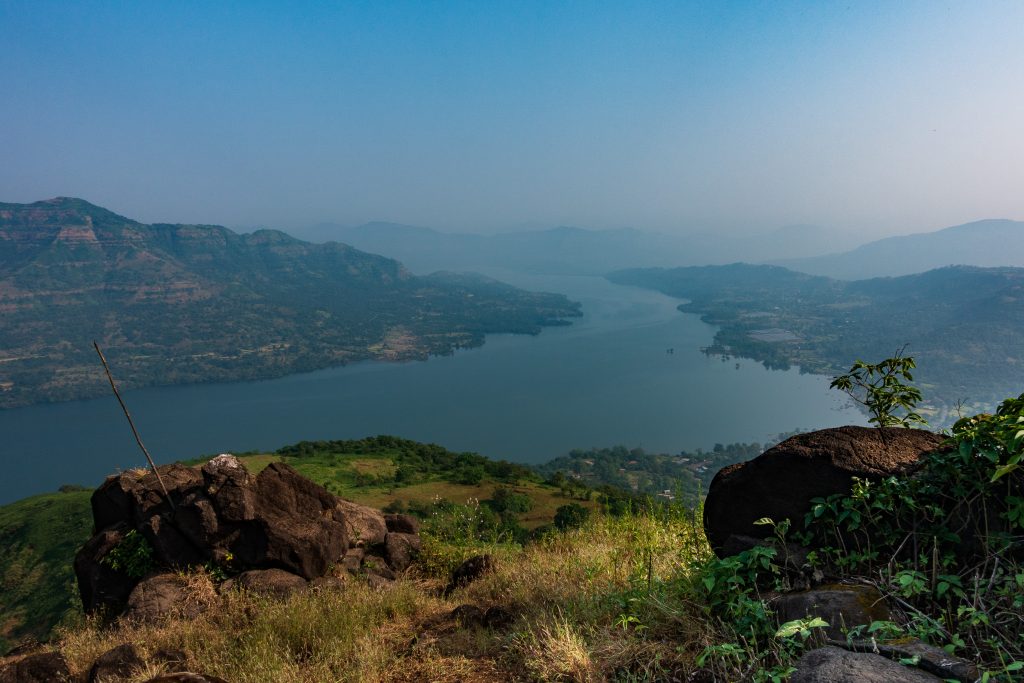
You can see alternate pathways up the mountain cut through the growth on the hillside.
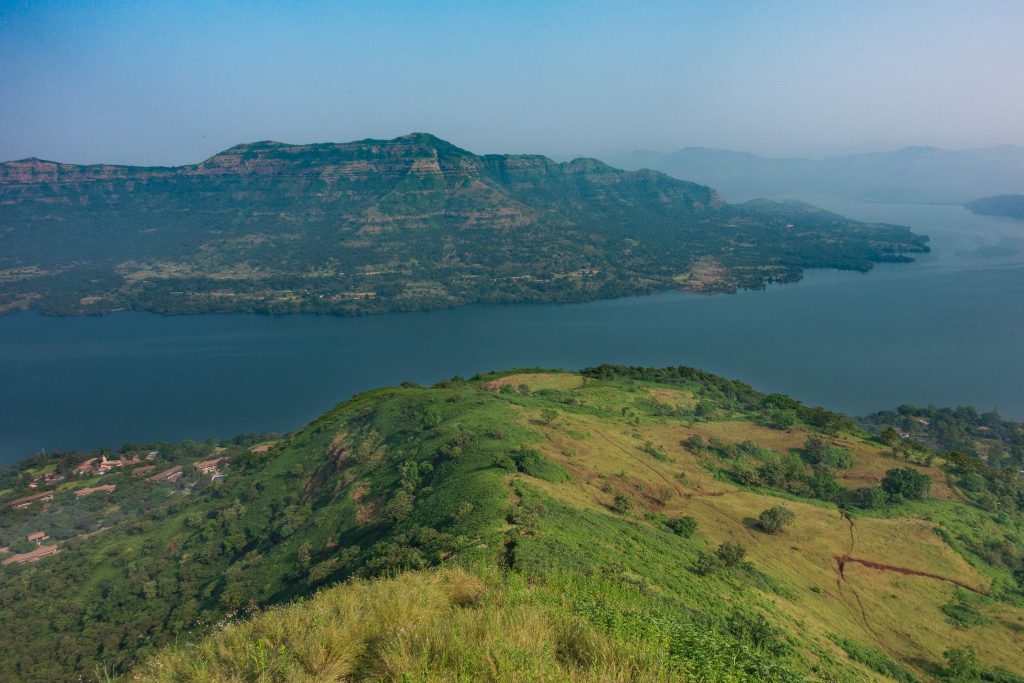
As we walked back, we came upon the livestock that had moved up to the top of the plateau.
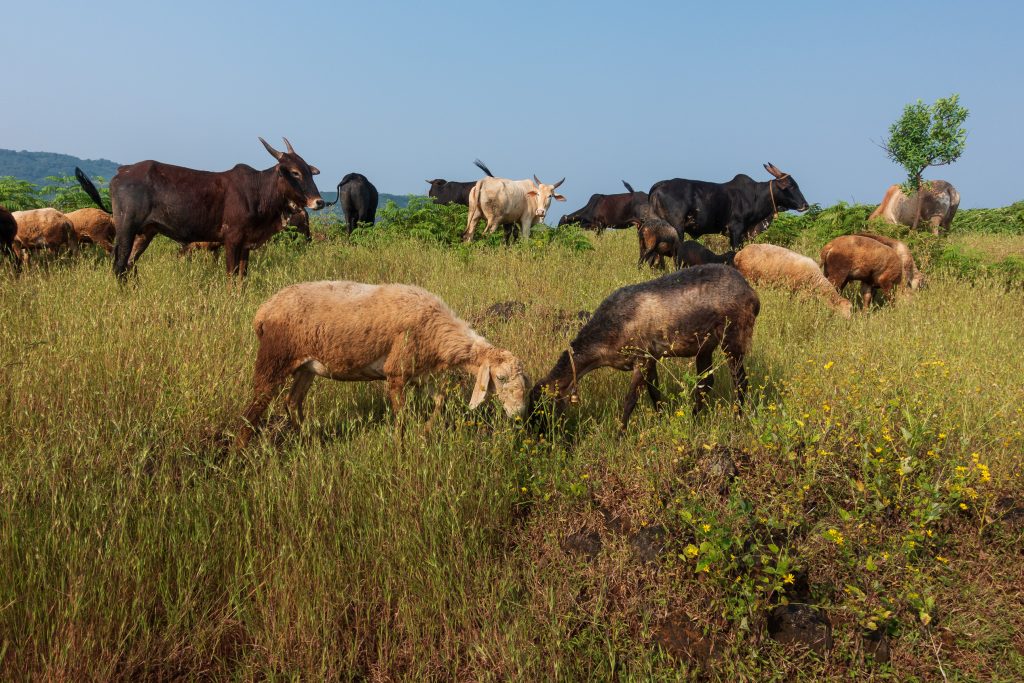
The goat was oblivious to me. The bull eyed me warily. It was all peaceful, though.
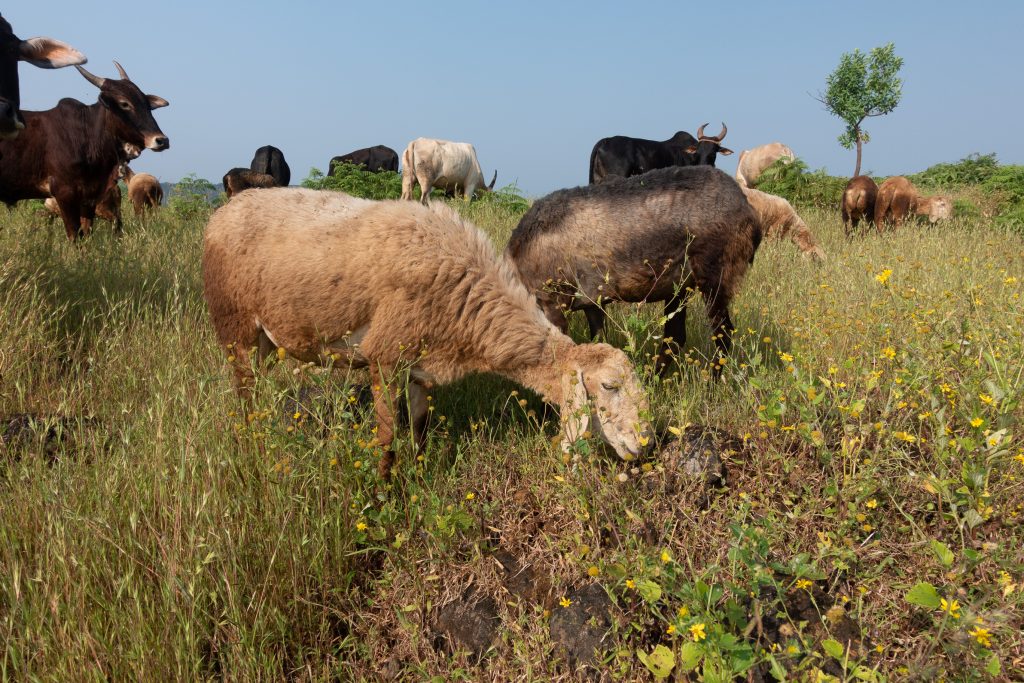
The greens and yellows of the grass under the Sun with the mist still rising from the prior night’s rain made for a beautiful view.
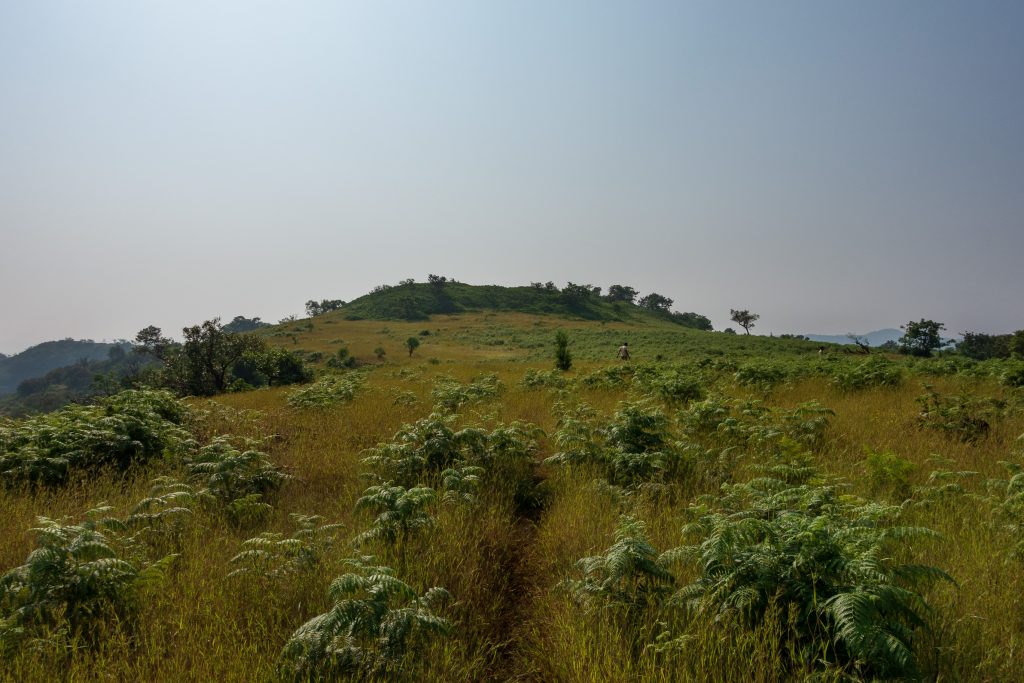
Needless to say, the walk down was easier than the walk up. This was a great way to spend a morning. It was a great visit.
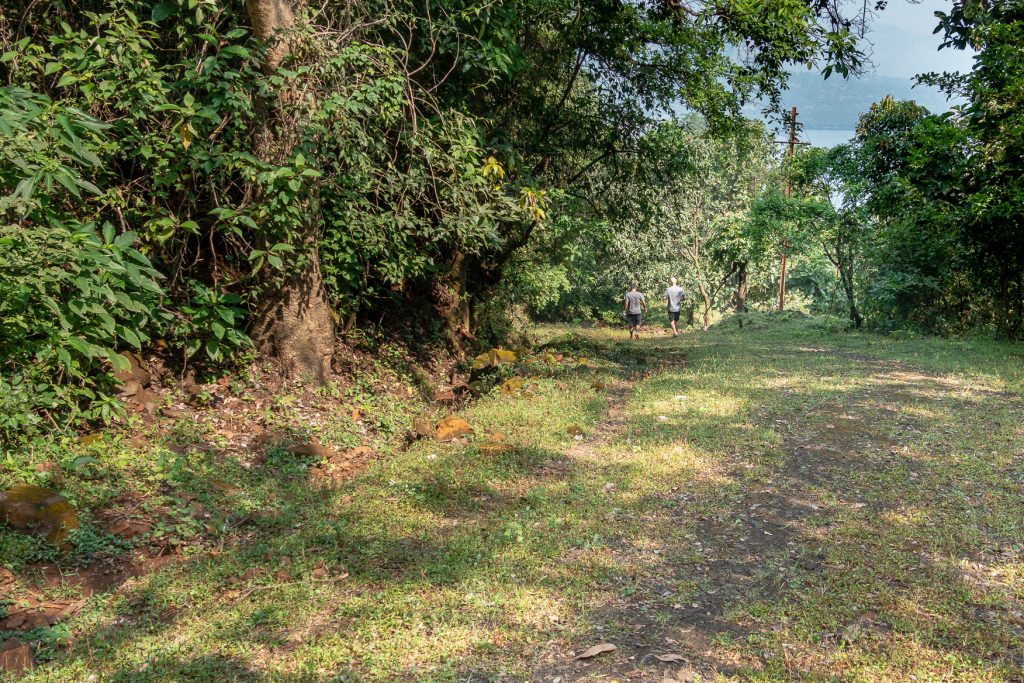
Here is the teaser shot from above, repeated so that Facebook will pick it up.


You must be logged in to post a comment.